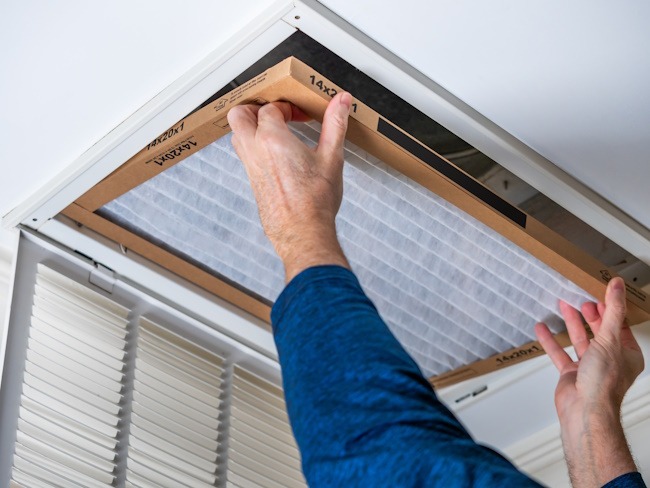When freezing temperatures arrive, your heating system becomes the hero of your home. However, even the most reliable system can struggle to keep up with the demands of winter weather. HVAC professionals play a crucial role in ensuring your heating system is prepared to handle the harsh demands of freezing temperatures. Whether you’re preparing for a severe cold snap or simply want to maximize your heating efficiency during the heating season, here are some in-depth tips and tricks to keep your house warm and cozy.
Step 1: Inspect and Maintain Your Heating System
Your heating system is your first line of defense against the freezing cold. Here’s how to make sure it’s ready for winter survival:
Schedule a Professional Tune-Up
Hiring an HVAC professional to inspect and service your heating system before the cold weather hits can save you from unexpected breakdowns. A tune-up typically includes:
- Cleaning burners and heat exchangers.
- Inspecting for leaks or cracks in the system.
- Checking the thermostat for accuracy.
- Ensuring proper airflow and filter cleanliness.
Replace or Clean Air Filters
Dirty air filters reduce airflow and make your heater work harder, which can lead to higher energy bills and potential system failures. During the heating season, check your filters monthly and replace them as needed.
Test Your Thermostat
A malfunctioning thermostat can throw off your entire heating system. Test your thermostat by setting it a few degrees higher and ensuring the system responds correctly. Consider upgrading to a programmable or smart thermostat for better control and energy savings.
Step 2: Seal and Insulate Your Home
Even the most efficient heating system can’t keep up with cold weather if your home isn’t properly sealed. Prevent heat from escaping by addressing these common culprits:
Seal Windows and Doors
- Use weatherstripping around doors and windows to block drafts.
- Apply caulk to seal gaps around window frames and baseboards.
- Consider installing heavy curtains or thermal window treatments to add an extra layer of insulation.
Insulate Attics and Basements
- Add insulation to your attic and ensure it’s evenly distributed. This helps prevent heat from escaping through the roof.
- Seal cracks and gaps in the basement or crawl space to stop cold air from seeping in.
- Install attic heaters if you live in areas prone to extreme freezing cold to protect pipes and stored items.
Check Your Ductwork
Leaks in your ductwork can cause significant heat loss. Have a professional inspect and seal any leaks, ensuring warm air reaches every room.
Step 3: Optimize Your Heating System
During the winter, every bit of efficiency counts. Here’s how to help your heater keep up with the cold:
Don’t Overwork Your Heater
- Set your thermostat to a consistent, reasonable temperature. Constantly raising and lowering the temperature forces your system to work harder.
- Use ceiling fans on the lowest setting to circulate warm air more evenly.
Utilize Zone Heating
If you have rooms you rarely use, consider closing vents in those areas and focusing heat on the spaces you use most. Portable heaters can provide supplemental warmth without overloading your main system.
Prevent System Overload
During extreme cold weather, even the best systems might struggle. To give your heater a break:
- Use space heaters as a backup source of heat.
- Keep doors closed to reduce the area that needs to be heated.
Step 4: Emergency Heating Solutions
Sometimes, heaters fail when you need them most. Be prepared for emergencies with these tips:
Install Backup Heat Sources
- Portable heaters: Keep electric or propane heaters on hand for emergencies. Ensure they are used safely and away from flammable materials.
- Heated gutters: Prevent ice dams on your roof by installing heated gutter systems, which can help protect your home’s structure during freezing cold.
Protect Pipes from Freezing
- Insulate exposed pipes to prevent freezing and bursting during extreme cold.
- Open cabinet doors to allow warm air to circulate around pipes under sinks.
Have an Emergency Plan
- Stockpile blankets, sleeping bags, and warm clothing in case of a heating system failure.
- Use your fireplace or wood stove if you have one, ensuring it’s properly vented and maintained.
FAQs About Winterizing Your Home
How to Winterize a House Without Heat?
If you’re leaving your house unheated, take these steps to minimize damage:
- Drain your plumbing system to prevent freezing pipes.
- Add antifreeze to toilet bowls and traps.
- Seal windows and doors tightly to keep cold air out.
- Insulate exposed pipes and install heated cables if necessary.
Should I Leave Heating On All Night in Freezing Weather?
Yes, keeping your heating system running during freezing weather is crucial. Lowering the temperature too much can lead to frozen pipes and increased strain on your system when reheating. Set your thermostat to a slightly lower temperature overnight but don’t turn it off.
How Cold Will My House Get Without Heat?
Without heat, your home’s temperature will drop rapidly, especially in freezing temperatures. The rate depends on insulation quality, home size, and external conditions. It’s essential to take measures to retain heat, such as sealing drafts and using emergency heat sources.
Conclusion
Preparing your home for winter survival requires a mix of maintenance, optimization, and emergency planning. By focusing on your heating system’s efficiency and ensuring your home is well-insulated, you can tackle even the harshest winter weather with confidence. Don’t wait until the first freeze; start preparing today to keep your home warm, safe, and comfortable during the heating season!
- 75 Easy Elf on the Shelf Ideas (quick last minute tips) - September 25, 2025
- Why Would a Girl Tell You She Broke Up With Her Boyfriend? - September 19, 2025
- Signs Your Husband Loves Another Woman – 35 Crucial Tips - September 18, 2025

